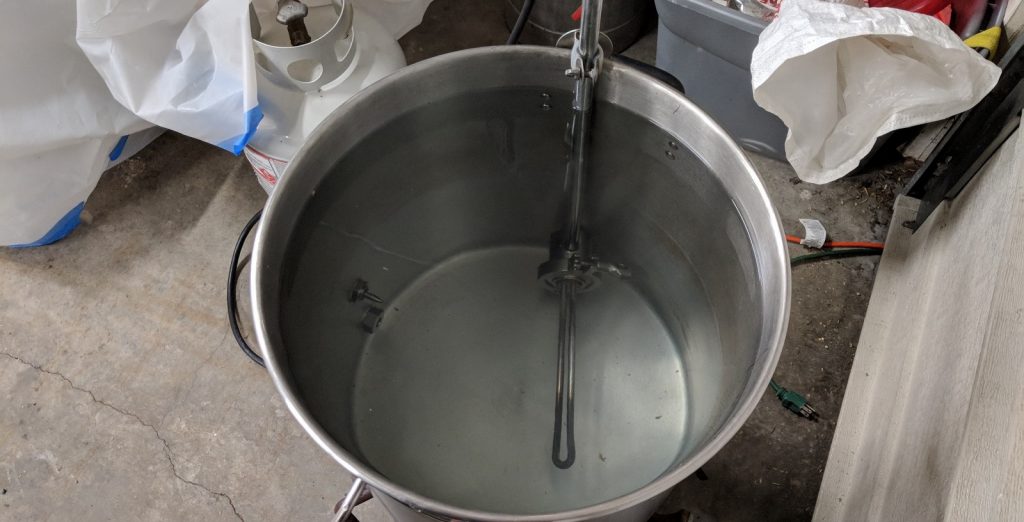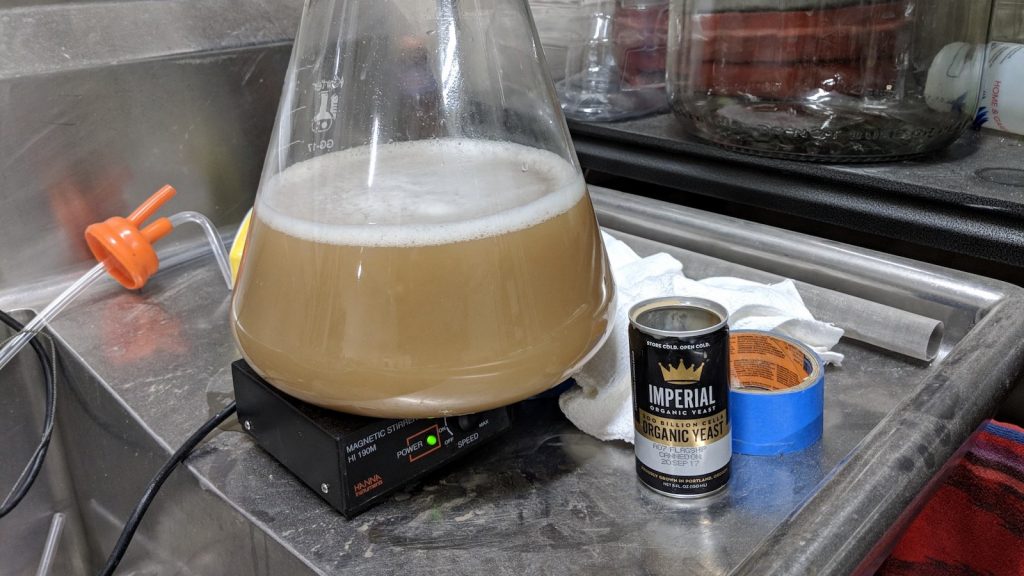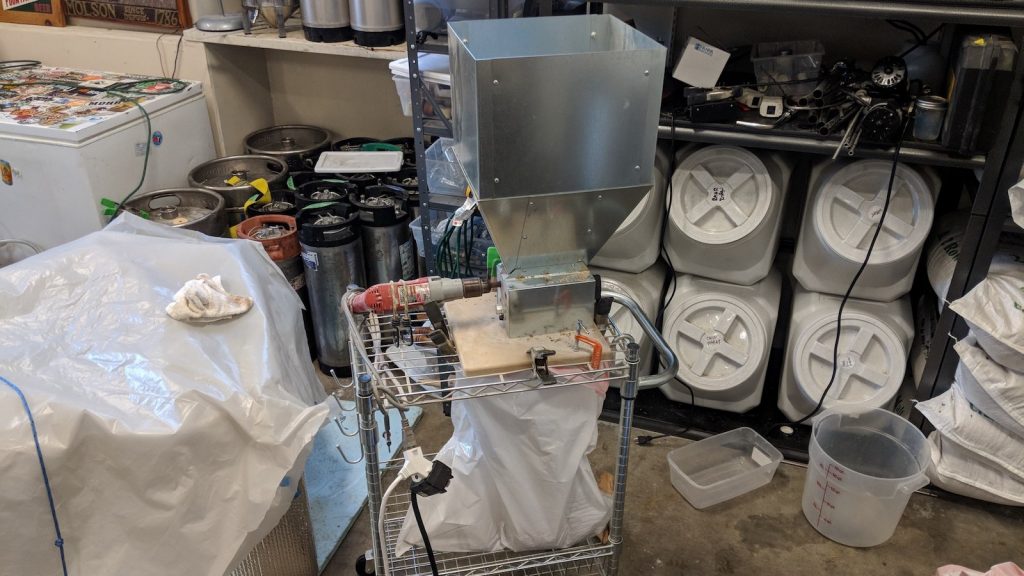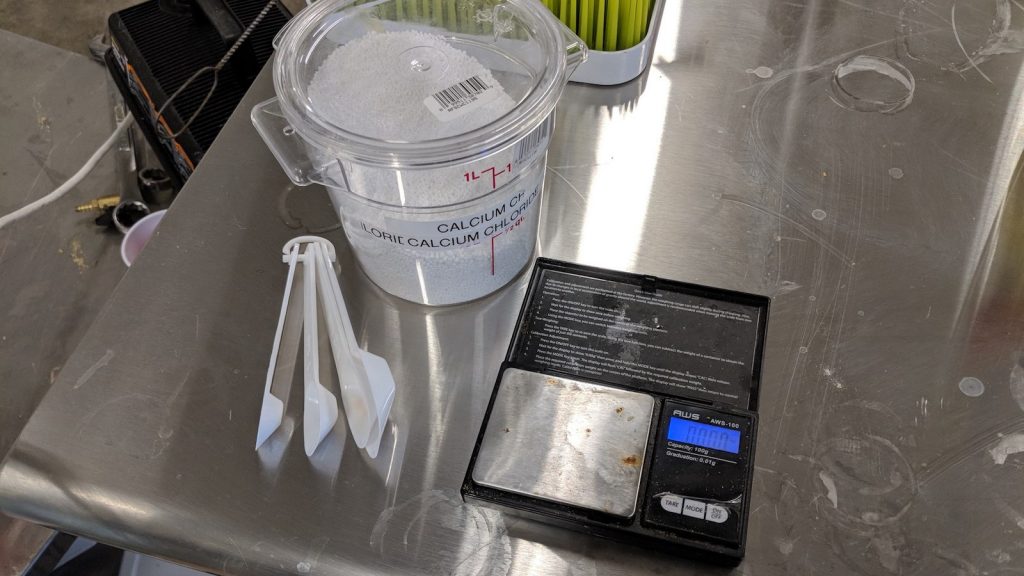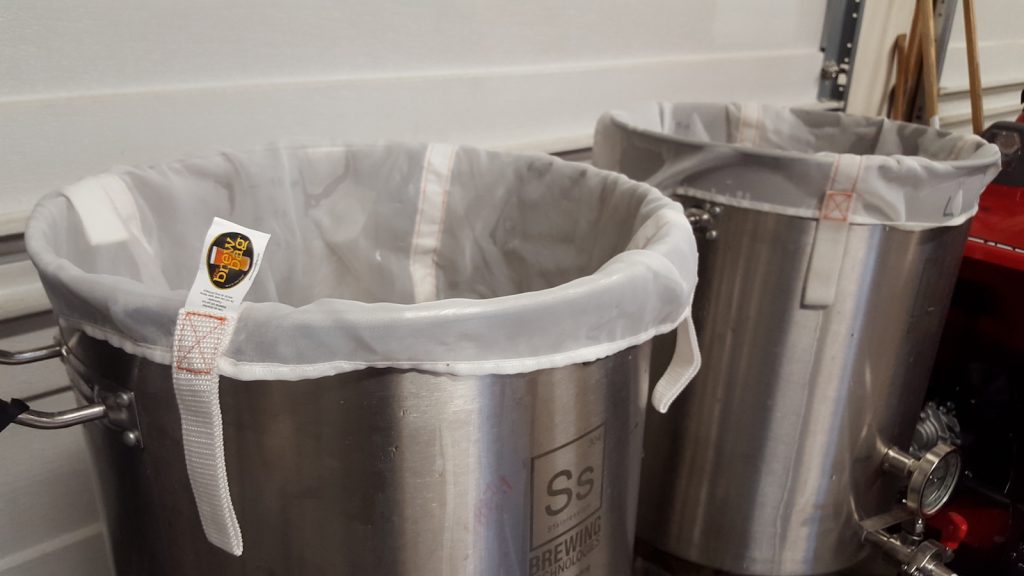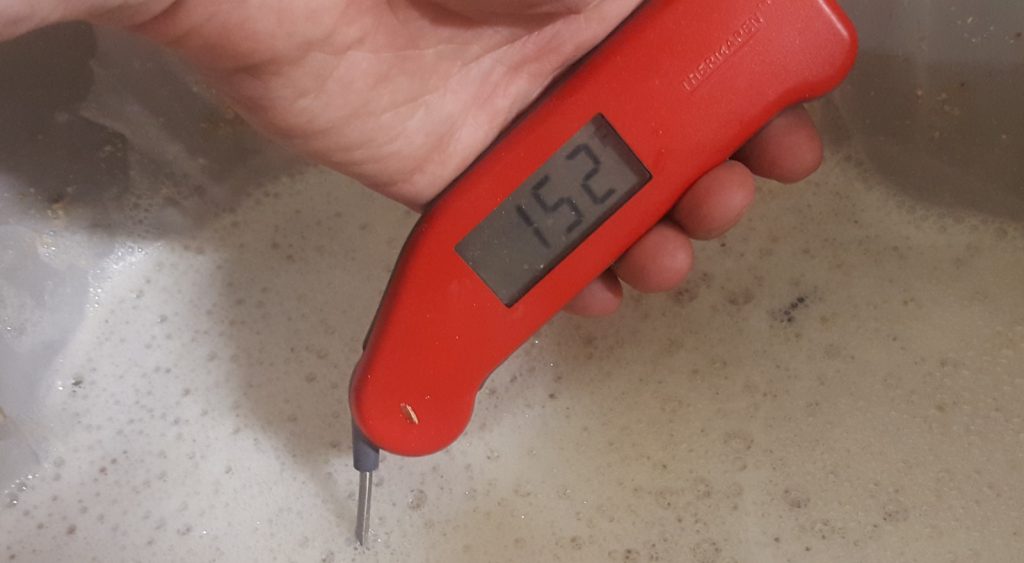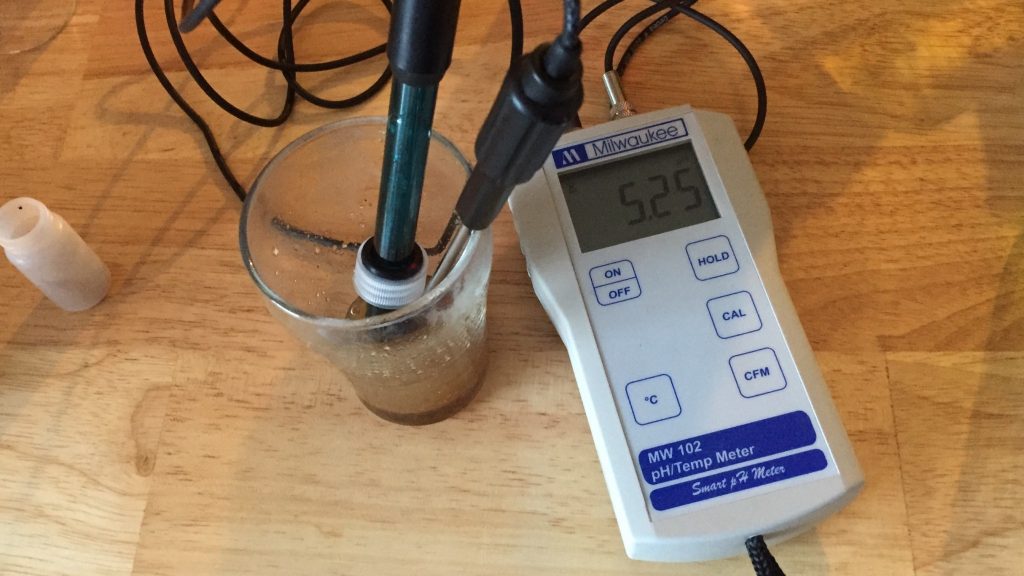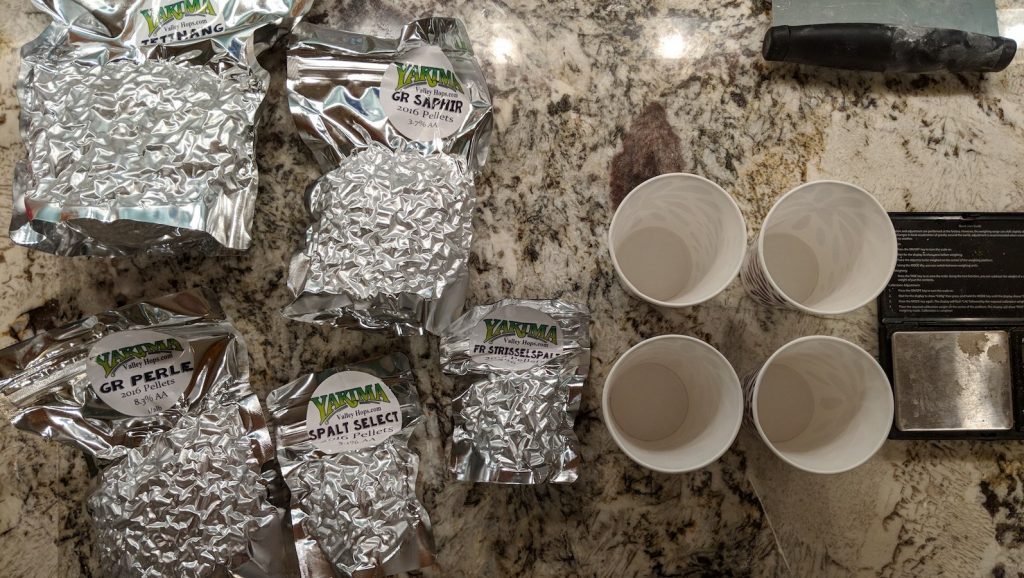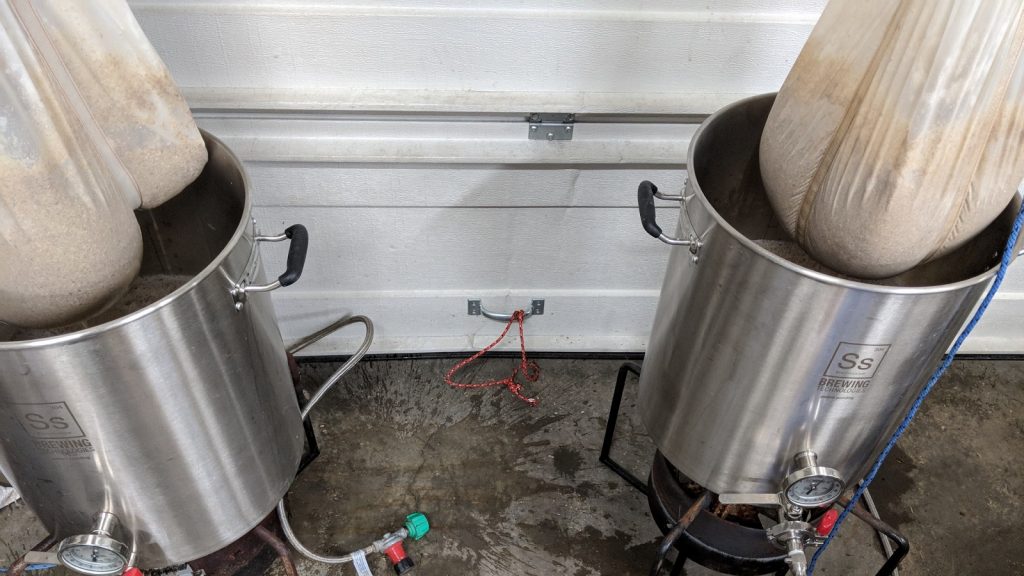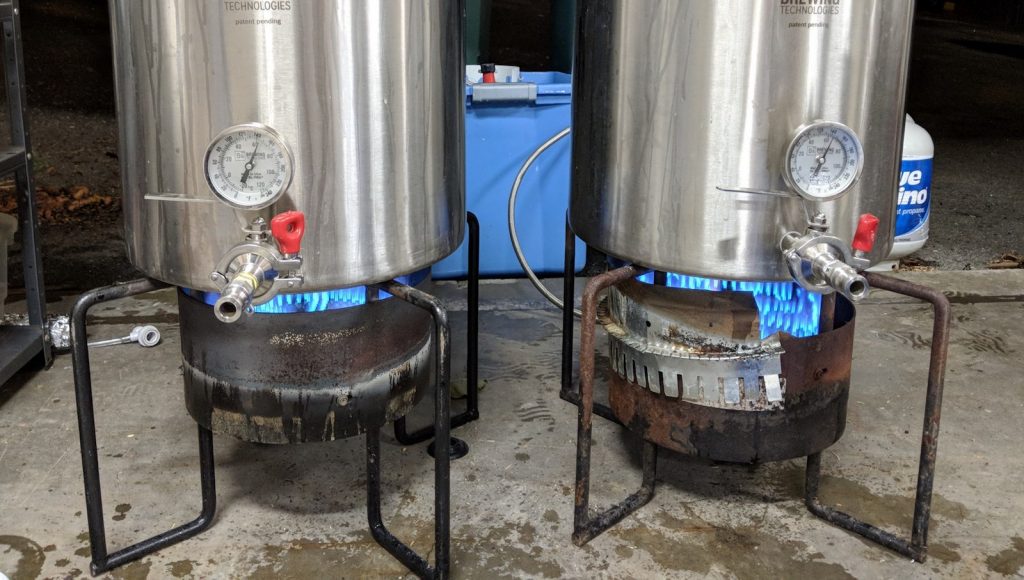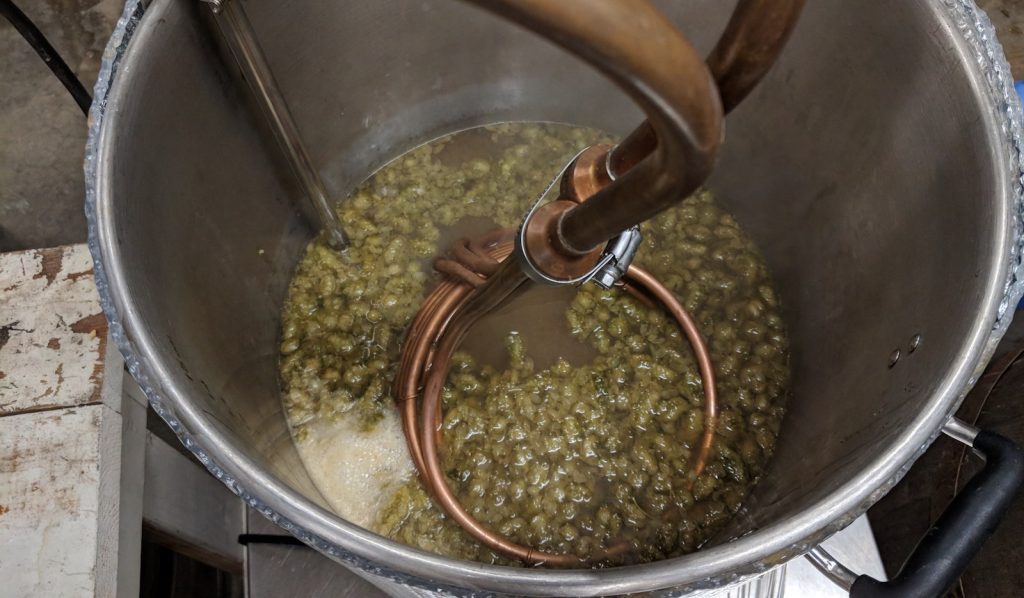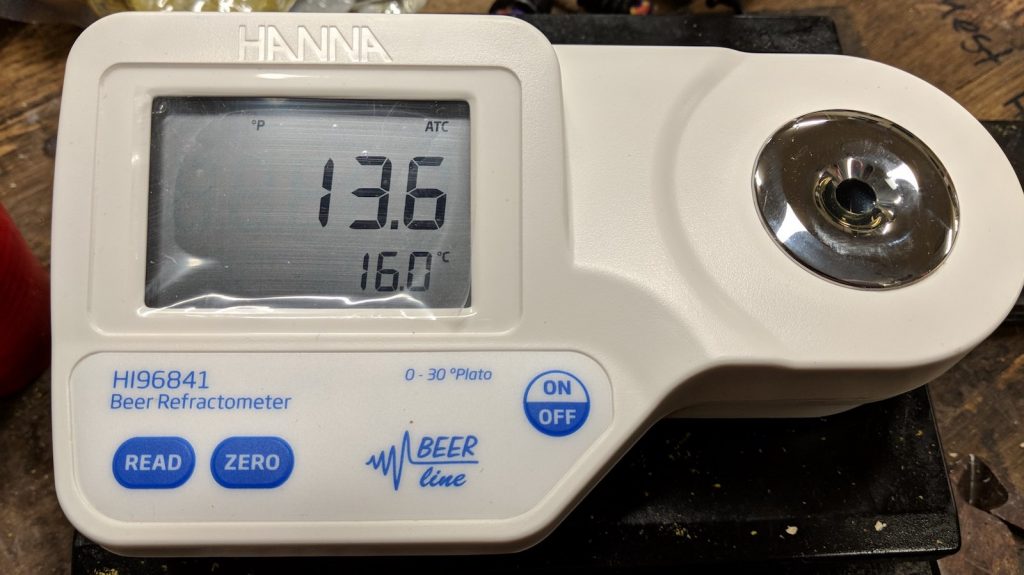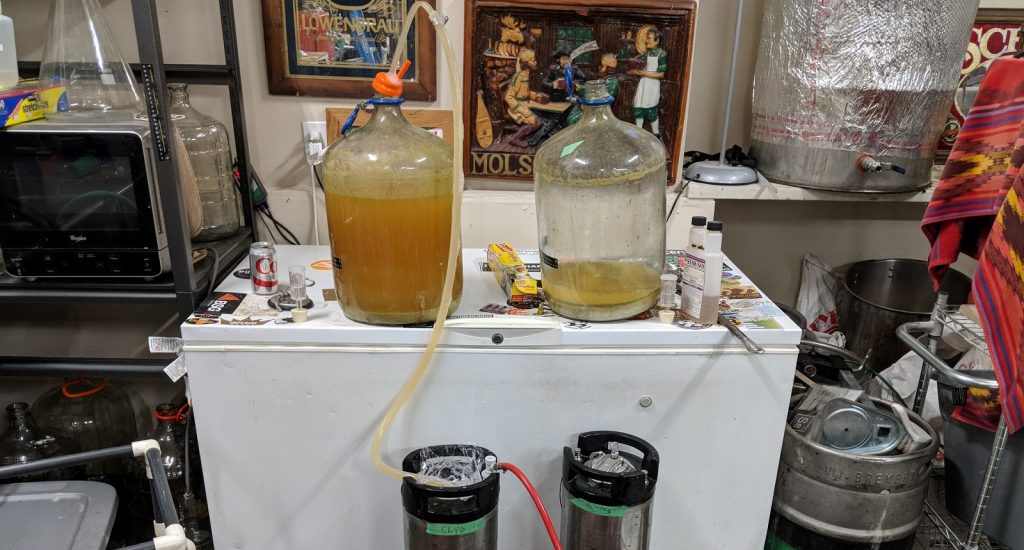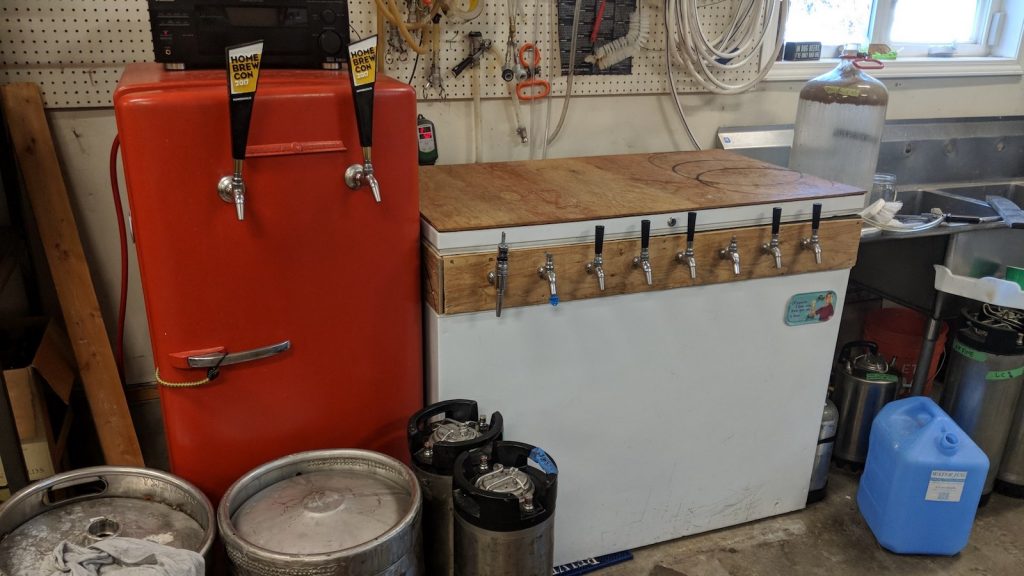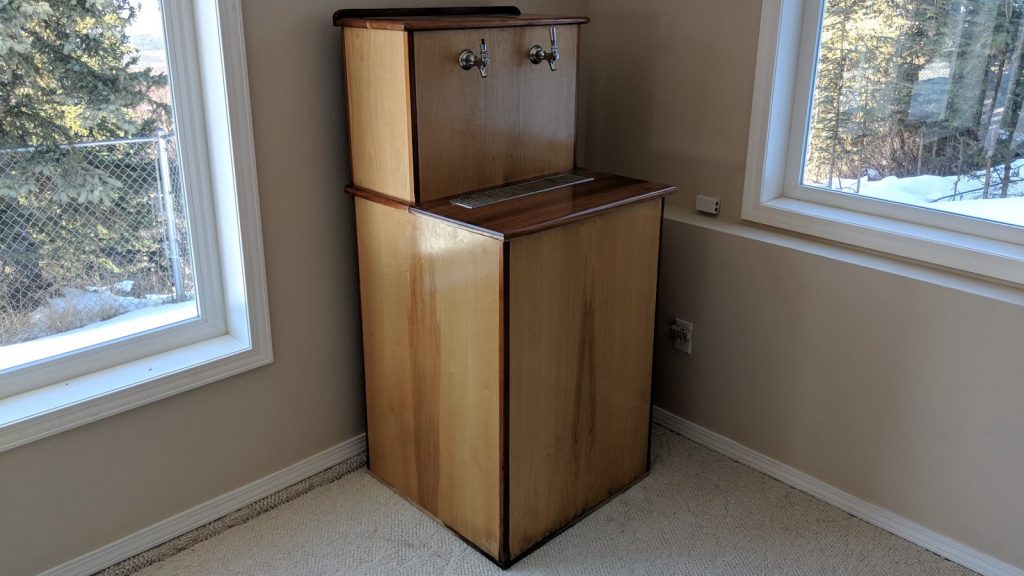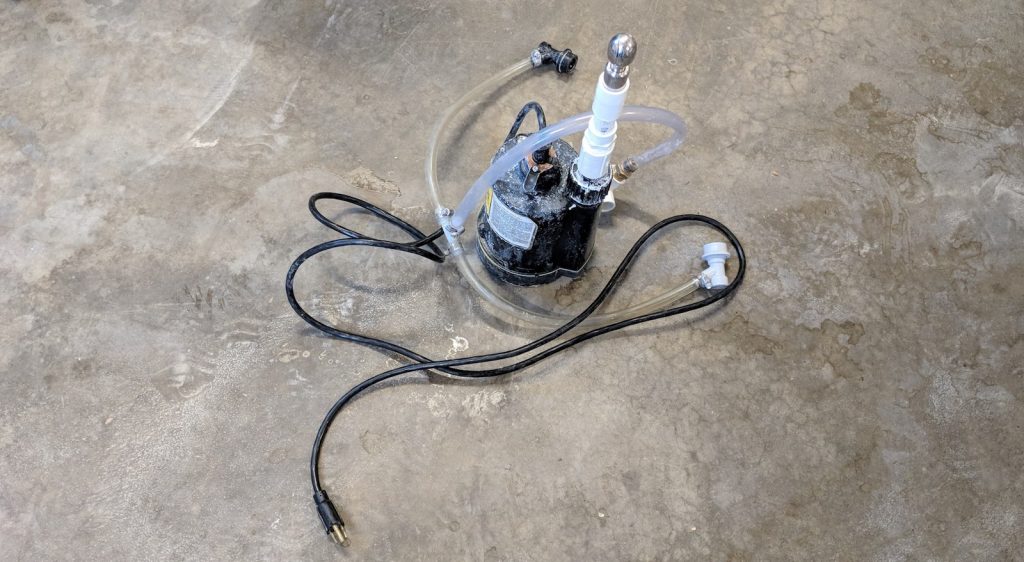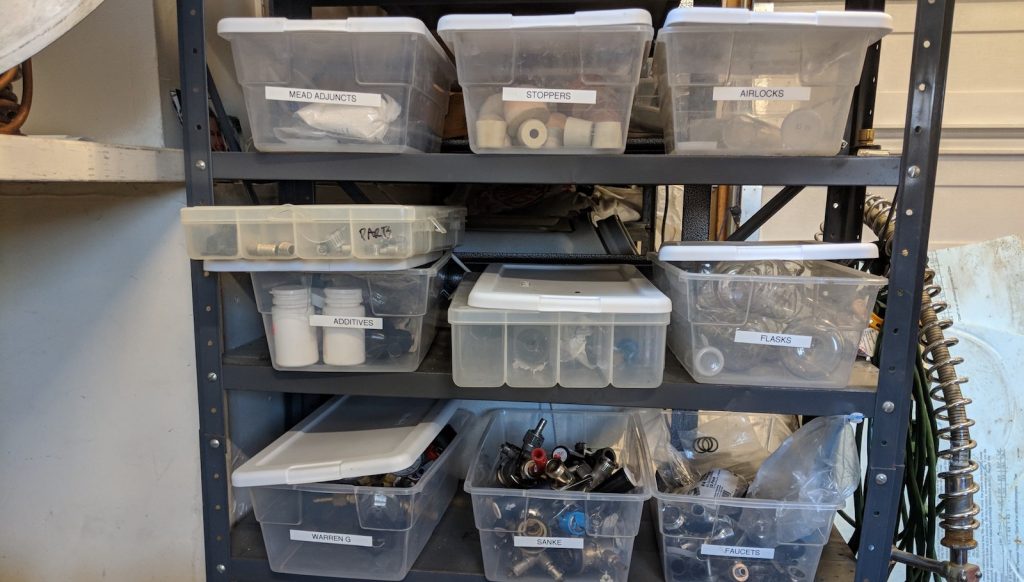Residing in the Last Frontier of Alaska, Brian has been brewing since 2003 and is a lover of most styles of beer, especially those falling on the wilder and hoppier side of the spectrum. Brian is a professional father who got his start writing about brewing and cooking at his Brouwerij-Chugach blog. He also serves as a board member of the Great Northern Brewers Club based out of Anchorage, AK. Brian officially joined the Brülosophy crew and is thrilled to be focusing more on the experimental side of brewing.
| ABOUT BRIAN |
How did you get into brewing?
My roommate in college was really into beer and would often buy bottles of Chimay Blue to harvest yeast. Not understanding why he was spending over $10 a bottle on beer, I got interested more in the yeast side and was curious about the process. We ended up brewing several extract batches in a small cabin in the woods with the goal of emulating beers our female friends would enjoy. After a few underwhelming results (and no lines of women at our doors), we took a break. Years later, I started making all grain batches and immediately began experimenting with different ingredients and methods.
What was your first batch and how did it turn out?
The first batch I made was with my college roommate and was supposed to be a Raspberry Wheat. The cabin we were brewing in didn’t have running water, so chilling was a bit difficult. Not knowing much about effective practices, we had a few blunders and the beer ended up tasting more hammy than berry. Thankfully, the seed was planted and this outcome didn’t shy me from the hobby.
How did you get involved with Brülosophy?
Marshall and I both were beta testers for the Yeast Bay back in 2013-2014 and stayed connected through email. We met at Homebrew Con 2016 and spent a lot of time talking about brewing, being parents, and loving life. We continued to chat throughout the rest of the year, exchanging thoughts on blogs, beer, and pizza. Curious of some of the xBmt results, I decided to start testing a few things on my own, which we’d always end up discussing. At Homebrew Con 2017, the idea of me joining the crew came up, and of course I said yes.
What xBmt has surprised you the most?
Probably has to be the xBmts on adjuncts in NEIPA. I became obsessed with the style for a few years and brewed many iterations of a recipe I call Alohops, all of which included either oats or wheat in some form. Convinced they played a role in the character of NEIPA, results showing flaked oats didn’t make a perceptible different really surprised me. Skeptical as I was, I eventually tried my hand at a similar xBmt comparing flaked oats to malted wheat, which yielded similarly non-significant results. Even I was unable to pick the odd one out despite having brewed the beers.
Have the xBmts influenced your current brewing perspectives?
The biggest thing the xBmts have done for me is cause me to think more about how we use ingredients and view the brewing process. I realize that is pretty all-encompassing, but I find myself learning more about a process and ingredient because I have a question about the xBmt, something perhaps I didn’t understand, or a comment that piqued my interest.
As far as a specific example, water chemistry is probably the best one. I began toying with my water a long time ago, far before joining the crew, but didn’t realize it was having as dramatic of an effect as the xBmts are suggesting it does.
What are your 3 favorite styles of beer?
New England IPA
When the focus is on creating a beer with a creamy mouthfeel, low bitterness, and insane hop flavor, New England IPA is one of my favorite styles. When the goal is maximum haze, I can’t stand NEIPA.
Lawnmower Lambic
This is a term I’ve coined for a Lambic beer that’s lower in funk and acidity. I love a crushable Lambic, I’ve been brewing them for years, and still enjoy drinking them any time of the year.
Pilsner
There was a point last year, sometime after getting home from Homebrew Con, where I’d drank so many sour beers and over-hazed NEIPAs that I was just sick of them. I wanted something clean and crushable. What better than Pilsner? I’ve been hooked since.
What are your favorite ingredients?
Malt: Vienna Malt
I just love how Vienna malt tastes, so much so that I use it in most any style of beer I make and appreciate the character it contributes.
Hops: Mandarina Bavaria
While I use Citra and El Dorado a ton when making NEIPA, I love the tangerine flavors and aromas Mandarina Bavaria imparts.
Yeast: Imperial Yeast A38 Juice & Wyeast 3278 Lambic Blend
Both of these are standard yeasts in my brewerey, A38 Juice being my go-to fermenter for NEIPA while WY3278 cranks out a great mild Lambic. I can’t pick just one!
What’s your desert island beer?
Pilsner Urquell in the can. I’ve been in love with the easy drinkability of this beer for awhile now. Whereas I’d probably get burnt out on most other styles, I can drink can after can of Pilsner Urquell without complaint. Why cans? Easy– you don’t take glass to the beach.
What music do you listen to while brewing?
I generally brew alone, so I generally choose music that will keep the energy going, and its my only chance to really sing and dance to certain tunes. I generally have it set to either 80’s hits, early 2000’s rap/hip hop, or top 100 type of stuff– if it was in a club in 1990-2000, I’m all over it, although some of the newer stuff is catchy as well. Snoop, Tupac, Em, Tay Tay, G-Eazy, Flo Rida, Dre, Outkast, Akon, Bloodhound Gang, etc.
If I’m brewing with others, it’s a bit milder.
What else do you enjoy doing besides brewing?
More than I have time for! I read, hike, bike, ski, swim, woodwork, metalworking, fly R/C airplanes, and do lots of things with food. This year, I plan to butcher and cure a hog, build a workshop, raise chickens, garden, organize a cellar, make some furniture, fish, and hunt, all while sticking with the normal “being a Dad” activities. I like to stay busy!
If you could go back, what brewing advice would you give yourself?
Use quality gear and ingredients. I would often buy things focusing on price instead of quality. I’m not saying everything has to be top of the line, but in my experience, spending a extra few bucks for a nicer kettle, better quality malt, or fresher yeast has definitely had more pros than cons. Brewing takes a lot of time, make it worth the while.
| BREWING GEAR & PROCESS |
I’ve gone through almost every brewery setup in the books and now try to make things as simple as possible without compromising quality. I started with extract kits before moving to a 3-vessel fly sparge system that I ended up doing batch sparge and no sparge batches on. Nowadays, I rely on a couple identical Brew In A Bag (BIAB) setups for xBmts and smaller batches, though I still use the 3-vessel rig for occasional 1.5 BBL group brews or barrel fills.
Pre-Brew Preparation
After doing any required research and think-tank discussions, I formulate a recipe in BeerSmith then use Bru’n Water to determine the adjustments I need to make to get to my desired profile. I run all of brewing liquor through a simple RO filter a day or two in advance since it can take awhile.
A few hours before brewing, I start heating the full volume of water using a HotRod Heatstick, which can take awhile.
During this time, I usually throw together a vitality starter, but for bigger beers, I make a larger starter a few days prior.
After weighting out the grains, I quickly crush them with a Monster Mill MM3 Pro using a high torque drill, which may be overkill, but it is awesome.
It’s at this point I weight out the water minerals using a small precision scale then add them to the heating liquor.
Brewing
Given my occupation as a father whose wife works an irregular schedule, my brew days can start at any time– from as early as 8:00 am to as late as 8:00 pm. In either situation, I walk-in to hot strike water, which usually gets separated between two 15 gallon Ss Brewtech Brew Kettles for xBmt brews. After ensuring the water is at the proper strike temperature, I gently drop the bagged grains, stirring until no lumps remain.
With the grains fully incorporated, I check the mash temperature.
While I’ve found Bru’n Water to be very accurate when it comes to mash pH, I only check it occasionally, especially if the variable being tested calls for it. In those instances, I pull a small samples from the mash at 15 minutes in and let it cool before taking the measurement.
As the starches convert to fermentable sugar, I weigh out my hop additions.
When the mash in complete, I remove the grain bag and let it drain until my pre-boil volume is reached.
I’m currently running on propane, so I only fire up my burners after opening the garage door.
I typically use Fermcap-S to keep boilovers at bay and add some Irish moss or Whirlflocc toward the end of the boil to assist in wort clarity. At the end of the boil, I chill using my JaDeD Brewing Hydra immersion chiller, which here in the Great North takes under 5 minutes per 5 gallon batch to hit 66°F/19°.
Once the wort is chilled, I steal a small sample of wort to check the OG on my digital refractometer.
I then pour the vigorously into a fermentor then move it to my temperature controlled fermentation chamber before pitching the yeast.
Packaging
When fermentation is complete, I gravity feed the the beer into a keg that has been purged with CO2 to reduce the risk of oxidation.
The filled keg is then placed back in my chamber where it’s cold crashed and fined with gelatin, Biofine Clear, or both depending on the style. Once they are in the kegerator, they are carbonated over a few days with 12-15psi of pressure. If I’m in a rush, I’ll use a carbonation stone attached to a keg lid to ensure solid carbonation in a couple hours.
Serving
I have both a 2-tap kegerator that I tend to reserve for sour beers and an 8-tap keezer for all of my clean stuff, my aim in keeping them separate being to reduce the risk of cross contamination.
I also have another 2-tap kegerator in my basement for house guests.
I currently have a mix of VentMatic, Intertap, and Perlick faucets, but plan to switch everything out to Intertap in the near future.
Cleaning & Sanitation
As a brewer of both sour and clean beers in my brewery, I’m a stickler for sanitation. Gear that has been used on the cold-side for sour/wild beers gets washed with PBW then boiled or steamed prior to being hit with Star San. This includes fermentation vessels, kegs, barrels, faucets, and any tubing.
For cleaning kegs and fermentors, I built myself a BrüBlaster outfitted with a CIP ball.
I use Star San rinsed gloves for all post-boil treatments and spritz anything that might touch the beer with Star San solution.
Other Stuff
I generally have lots of brewing projects going at the same time and have found a labeler works great to keep things organized.
I use a VacMaster vacuum sealer to ensure my hops remain as fresh as possible.
I can’t stand smoked beer.
Finally, the main theme in my brewery is aloha. Most of my beer is shared, much of it is critiqued, and I try to use it to educate and inspire others. Beer is a tool I use to connect with others in the community, foster new relationships, and reach people I probably wouldn’t meet otherwise. I like to encourage all who are in our community to share that aloha spirit whenever you raise a glass together. Cheers!
Contact Brian via email at brian@beerconnoisseur.local and feel free to leave any questions in the comments section below! A regularly updated version of Brian’s process and gear can be found on his contributor page.
New Brülosophy Merch Available Now!
Follow Brülosophy on:
FACEBOOK | TWITTER | INSTAGRAM
If you enjoy this stuff and feel compelled to support Brulosophy.com, please check out the Support Us page for details on how you can very easily do so. Thanks!



